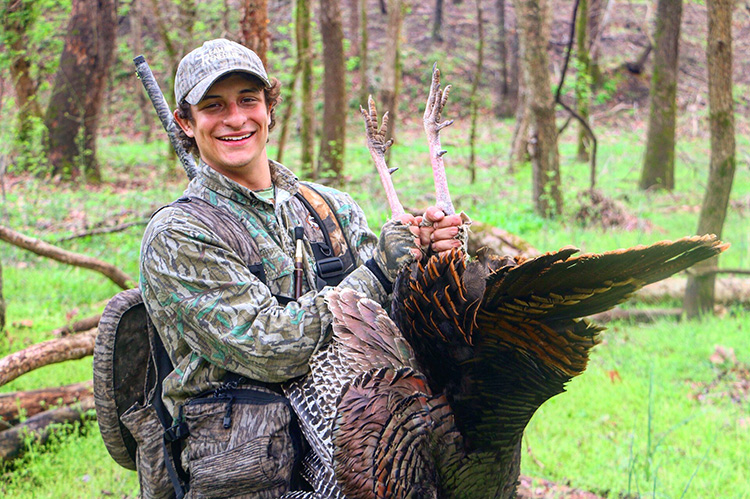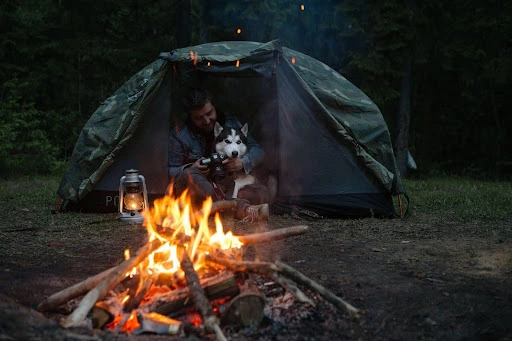Hunters who consistently kill turkeys on public land each year have adapted their own set of tactics through trial and error. After five years of chasing long beards on public land during my college years, I have developed four surefire tactics for locating and killing hard-hunted gobblers on public land. These methods work well where I hunt in Northern Mississippi, but they can easily be adapted to public-land hunting anywhere.
February is usually a gloomy month for outdoorsmen. Waterfowl and whitetail seasons have recently closed. It’s too cold to go fishing, and cabin fever seems to be a common illness. However, this time of year offers the best chance at getting a jump-start on killing a spring gobbler.
To beat the February blues, I like to grab my .410 for squirrels and rabbits, and lace on a good pair of hiking boots. Boots on the ground is one of the biggest factors in setting the table for spring gobbler success as knowing the lay of the land is critical. The foliage is off the trees this time of the year, which makes a walk through the woods fairly easy. The snakes and ticks usually haven’t made their warm weather debut quite yet, either. And since whitetail deer shed their antlers this time of year, you can keep a lookout for sheds while you search for turkeys.
Before I set foot in the woods, however, I use satellite imagery to locate roads, ridges, hollers (the bottom of deep hardwood ravines), edges (where pine trees and hardwoods meet), and crop fields, which are all prime places to find turkeys. Once I begin walking, it’s important to keep an eye out for tracks, droppings, dusting sites, and feathers. If I find a track or feather, I’ll come back later in the spring and have a listen.
For thousands of years, fires have been used as a tool to regenerate the forest floor and activate growth that directly benefits the wildlife that calls the understory home. On public lands all across the country, there are seasonal prescribed fires conducted by professionals to enhance the ecosystem. Since these areas are normally open to hunting and other outdoor activities, fire warnings, burn areas, and fires breaks are usually visibly marked with signs for safety. Since professionals conduct these burns, forestry agencies keep detailed maps and records of burn areas and fire breaks for logistical and safety reasons.
Visit the forestry office that manages the area where you want to hunt and ask to see these maps. Foresters are usually willing to share their knowledge of the woods. Once you have located fresh burn areas, finding a turkey is usually not very difficult as these areas draw turkeys like a magnet.
Firebreaks provide easy trails to sneak along and call in search of a willing gobbler, but they also create edges within vast tracks of timber. In my experience, gobblers love to strut and feed along the edges of these burned areas. Fire exposes many dormant seeds and produces new green growth at turkey level, providing a natural food plot. Unfortunately, every year there are uncontrolled forest fires across the country that burn with devastation, but they also have a positive effect on the ecosystem. The same tactics can be applied to finding and killing a long beard in these areas where natural burns have occurred.
Successful public-land turkey hunters all have their own unique tactics that set themselves apart from other hunters. Sometimes finding birds requires going farther than most hunters are willing to go. When looking for new areas to find turkeys, water sources of all kinds are an excellent starting place.
Turkeys love to roost over rivers, creeks, swamps, sloughs, and lakes because of the safety water provides from predators. Fortunately for us, most of the water sources turkeys like to roost over are fairly easy to navigate with a kayak, canoe or jon boat, allowing for a somewhat silent approach to gobblers off the beaten path. Even a set of waders or hip boots can be worn to quietly walk up creeks and ditches to get close to roosted turkeys.
Quick tip: When hunting vast timber tracts of public land that don’t offer water sources as a means to cover ground, I have used a mountain bike to quietly and efficiently travel logging roads and ATV trails to get away from roads and other easily accessible areas. I often stop every couple hundred yards to call loudly in hopes of striking a gobble.
When thinking back through my years of successful turkey hunts, nearly half the birds I’ve taken died in the afternoon. In the peak of the breeding season, hens will leave gobblers in the late mornings and afternoons to go sit on their nests, leaving gobblers lonely and looking for love. I prefer to tackle afternoon hunts in one of two ways.
The first is covering as much ground as possible, walking and calling loudly or using various locator calls (crow, owl, or red tail hawk) to strike up a lonely tom. Oftentimes, if a bird gobbles in the afternoon, they will come quickly and willingly to the call. The second method emphasizes patience.
When I have located or established a pattern on a tom and I know the general area he likes to strut, roost, or feed in, I will quietly sneak in to those locations, set up, and softly call every 20 minutes. The openness of the terrain and the hunting pressure in a given area will usually determine whether I use a decoy or not. A lot of hunters normally hunt the roost and once gobbling activity shuts off for the morning they pack up in frustration and leave the woods. That’s a mistake. Take advantage of the afternoons because they are often the most exciting and rewarding times to tag a turkey. One word of caution, however.
Hunting public land can be extremely gratifying, but it also presents a certain level of danger. Always be cautious of other hunters when hunting public land. I rarely use a decoy on public-land hunts. If the situation calls for one, I only use a hen decoy to lessen the chance that another hunter might confuse it with a gobbler and accidently fire in my direction.
After a successful hunt, wrapping my dead bird in a blaze orange vest and simply wearing an orange hat and vest for the walk out are two precautions I take to ensure safety in the turkey woods.
Ultimately, success on public land requires time afield, so step outside and go explore our wild public lands. They are teaming with turkeys.









